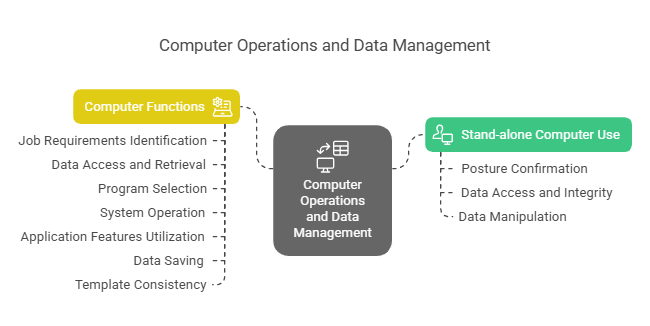Identifying Job Requirements for Computer Systems in Printing and Graphic Arts
Posted by Payel Chandra Das in Mar, 2025
What is a concise description of job requirements for using computer systems in the printing and graphic arts sectors?

Job requirements for using computer systems in the printing and graphic arts sectors typically involve skills in graphic design software, understanding digital printing processes, and strong attention to detail. These requirements are essential to create accurate, high-quality visual outputs and ensure efficient workflow in the industry.
Listen to this article as a podcast
Why do people in the Printing and Graphics industry need skills in using computer systems?
Professionals in the Printing and Graphics industry need computer skills to streamline their work processes, enhance communication, and boost productivity. With these skills, they can efficiently create designs, troubleshoot issues, and adapt to technological advancements, ensuring that they remain competitive in the marketplace.
“Proficiency in computer systems is the cornerstone of innovation and efficiency in the Printing and Graphics industry, enabling creativity and precision in every project.”
What are the key components or elements of computer systems in the printing and graphic arts sectors?
Key components include:
- Graphics Software: Tools like Adobe Creative Suite for design and editing.
- Digital Printing Technology: Equipment and software used to produce high-quality prints.
- File Management: Organizing and maintaining digital files for easy access.
- Network Systems: Infrastructure for communication and data sharing.
- Technical Support: Assistance for troubleshooting and resolving issues.
What key terms, with descriptions, relate to computer systems in the printing and graphic arts sectors?

Registered Trademark®
- CMYK: The color model used in printing, comprising Cyan, Magenta, Yellow, and Key (Black).
- Raster Graphics: A type of digital image made up of a grid of pixels.
- Vector Graphics: Images created using paths or geometric shapes, rather than pixels.
- Resolution: The detail an image holds, often measured in DPI (dots per inch).
- Prepress: The preparation of files for a printing process.
Who is typically engaged with operating or implementing computer systems in the printing and graphic arts sectors?
Graphic designers, prepress technicians, print operators, IT support teams, and production managers are commonly engaged in operating or implementing computer systems. These professionals collaborate to ensure that printing and design outputs meet the desired standards and specifications.
How does using computer systems align or integrate with other components of the Printing and Graphics industry in Australia?

The integration of computer systems with traditional printing technologies enhances quality, efficiency, and innovation. By aligning digital solutions with printing techniques, Australian industries can produce cutting-edge designs and tackle complex printing tasks, facilitating growth and competitiveness in a global market.
Where can the student go to find out more information about using computer systems in the printing and graphic arts sectors?
What job roles would be knowledgeable about using computer systems in the printing and graphic arts sectors?
Roles include:
- Graphic Designers
- Prepress Technicians
- Print Operators
- IT Support Technicians
- Production Managers
What is using computer systems in the printing and graphic arts sectors like in relation to sports, family, or schools?

Using computer systems in the printing and graphic arts sectors can be compared to a sports team efficiently working together towards a cohesive goal.
Within a family context, it mirrors managing household tasks with advanced tools that simplify processes.
In schools, it reflects the use of technology in modern education to engage students and facilitate learning, fostering creativity and technical skills in both teaching and curriculum development.
(The first edition of this post was generated by AI to provide affordable education and insights to a learner-hungry world. The author will edit, endorse, and update it with additional rich learning content.)
(Skillmaker – 2025)

 Post Tagged with
Post Tagged with